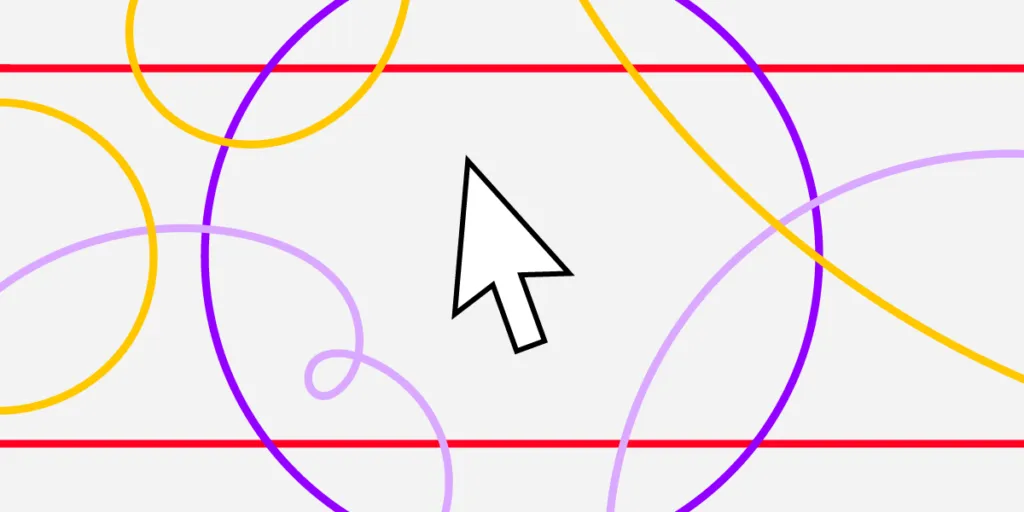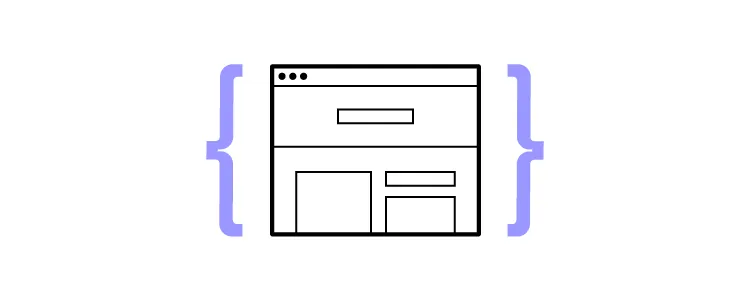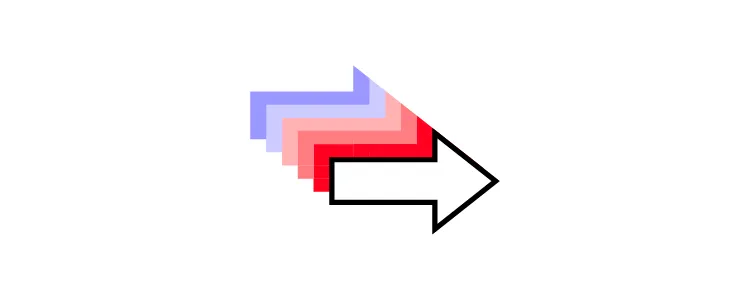7 Constraints in Design and How to Overcome Them

Whether you work in an early-stage startup or a multinational enterprise, design constraints limit or influence design projects and the desired output. Seasoned designers understand that true creativity often emerges when we confront and master the constraints that shape our work. In this blog post, we delve into the art of design constraints, a topic close to the hearts of senior designers.
Key takeaways:
- Design constraints are restrictions that influence the creative and technical decisions made during the design process.
- The first step is acknowledging these limitations and that they constrain UX designers from delivering great design outcomes.
- Understanding and managing design constraints will minimize adverse effects or eliminate issues altogether.
Eliminate prototyping constraints, bridge the gap between designers and engineers, and deliver exceptional user experiences with UXPin Merge. Visit our Merge page for more details and how to request access.
What are Design Constraints?
Design constraints are limitations or restrictions in the design process imposed by internal and external factors. These constraints impact the final product, so it’s critical that everyone in the organization is aware of them and considers these limitations before every project.
Common types of design constraints include:
- Technical constraints: how a product’s tech stack and engineering team limit design
- Financial constraints: departmental and project budgets
- Legal and regulatory constraints: laws design teams must follow
- Organizational constraints: culture, structure, policies, bureaucracy
- Self-imposed constraints: each designer’s workflow and creative decision-making
- Talent constraints: designer skills and experience and professional shortcomings
- Project-specific constraints: limitations relating to the project, including time, budget, available team members, etc.
We’ll explore these in greater detail and discuss how team members and stakeholders address design constraints.
Technical constraints
Technical constraints significantly impact design projects because they dictate how far designers can push creative and innovative boundaries.

Some examples include:
- Device and operating system limitations: iOS and Android constraints, screen sizes, processing power, etc.
- Accessibility constraints: how voice control and screen readers impact design decisions.
- Performance constraints: the impact of user bandwidth/Internet connectivity, product servers, and tech stacks.
- Integrations and APIs: limitations from external services and API requirements.
- Tech stack constraints: how front-end and back-end tech impact the design process.
Financial constraints
Financial constraints impact many areas of the design process, including human resources, tools, user research, project scope, and technology. While many see financial constraints as a roadblock, they often drive creative thinking and design innovation through bootstrapping and workarounds.
Some ways financial constraints impact the design process include:
- Limiting the scope of each discipline (research, wireframing, prototyping, interviews, testing, etc.)
- Limits the number of iterations and testing rounds
- Specifies what tools designers use
- Determines the size and skill level of the design team
Legal and regulatory constraints
Legal constraints impact content and user data the most regarding UX projects. These laws change depending on the country, so designers rely on advice from legal counsel and stakeholders. These laws change depending on the country, so designers rely on advice from legal counsel and stakeholders and they also must stay constantly updated with evolving law information to ensure that their designs remain compliant.
Some examples of how legal constraints impact design include:
- Privacy laws: dictate what data designers collect, how they collect it, the legal notices they give users, and how they get permission–notably, General Data Protection Regulation (GDPR) in the European Union or the California Consumer Privacy Act (CCPA).
- Accessibility laws: what designers must do legally to make user interfaces accessible for users with various impairments– for example, the Americans with Disabilities Act (ADA) in the United States.
- Intellectual property laws: copyright for original works, including text, images, video, etc. Additionally, designers must consider whether they infringe on competitor/brand IP, trademarks, and other legal protections.
- Industry-specific regulations: some industries, like financial and healthcare, have laws about privacy and security that significantly impact design–for example, login and authentication procedures.
Organizational constraints
Organizational constraints describe limitations imposed on Design by other parts of the company. These limitations often relate to the organization’s values, culture, company vision, and competing interests from other departments.
Some examples of organizational constraints include:
- Time constraints: deadlines set by stakeholders can impact how designers research, prototype, and test design ideas.
- Brand guidelines: an organization’s brand influences stylistic and messaging decisions.
- Marketing and business goals: designers often have to balance user needs with organizational goals, which can limit design choices.
- Design system constraints: available components, design principles, style guides, guidelines, and design system governance impact how designers create products.
- Organizational silos: poor communication and collaboration lead to silos that hamper progress. These silos often lead to duplicate work, delays, design drift, inconsistencies, and other friction.
- Design’s value: how the organization perceives the UX department can impact resource allocation and buy-in, limiting what designers can do.
Self-imposed constraints
Self-imposed constraints come from the designers, relating to the choices and options during the design process, like which design tool they use, the time it takes to complete tasks, and whether they use the product’s design system.
Talent constraints
Talent constraints relate to the skills and specialists available to the design team. It’s important to know every designer’s skill set and expertise so that managers can assign people who complement one another. Understanding talent constraints enables managers to source the right people and when to hire specialist contractors for specific design projects.
Suppose an organization is working on a complex digital product redesign or a new application interface. The demand for talented UX/UI designers is high due to the project’s scale and complexity. However, the organization struggles to find and hire enough qualified designers within the required timeframe.
Project-specific constraints
Project constraints create design problems that otherwise don’t exist or are rare to an organization. For example, designers might have to complete a project in a shorter timeframe than they’re used to, resulting in adapting workflows or switching tools to accomplish the desired outcome.
Imagine a scenario where a company decides to overhaul its existing website to align with a rebranding initiative and improve user experience. The marketing team has planned a major product launch, and the redesigned website needs to be ready before the launch date, which is only a few weeks away.
How to Overcome Design Constraints
In many organizations, overcoming constraints is a DesignOps function. The DesignOps team must reduce these limitations and roadblocks to maximize the department’s output and organizational value.

This problem-based framework will help overcome design constraints starting with your organization’s biggest challenges. A problem-based approach will allow you to solve a specific issue and its related constraints, thus increasing the impact.
- Define the problem: what challenge are you trying to solve? This could be reducing time-to-market or increasing designer productivity.
- Identify the constraints: list the constraints related to this problem, i.e., budget, resources, time, technical, etc.
- Prioritize the constraints: determine which limitations are most consequential and prioritize accordingly.
- Brainstorm solutions: meet with appropriate experts, team members, and stakeholders to brainstorm solutions. Create a list of possibilities.
- Evaluate the solutions: consider the pros and cons of each idea and determine which has the highest feasibility with the most significant potential impact.
- Choose a solution: select the solution you believe will deliver the best results and put plans in place to implement it.
- Test and iterate: create KPIs to measure your solution’s effectiveness and tweak them over time to optimize the results. Don’t be afraid to abandon poor-performing ideas and iterate on new ones.
Define the problem: efficacy vs. efficiency
In a webinar with UXPin, DesignOps expert Patrizia Bertini outlined how practitioners must frame problems to measure results from solutions. Patrizia argues that it’s essential to recognize the difference between efficacy and efficiency because you evaluate these differently.
Efficacy uses qualitative metrics, including:
- Empathy and ongoing user engagement
- Ideation and experimentation cycle times
- Composition of teams’ skills (skill matrix)
- Design skills’ distribution
- Perceived value of design by cross-functional partners
- Designer satisfaction and retention
Efficiency is measurable and quantifiable using numbers, percentages, and ratios:
- Tools’ ROI (cost/engagement/adoption)
- Testing and prototyping lead time (time)
- Number and type of quality reviews
- Team productivity (resources utilization)
- End-to-end delivery time (time)
Reducing Constraints With UXPin Merge
Traditional design workflows and image-based tools present many constraints for designers–most notably, prototyping fidelity and functionality which have many adverse effects, including:
- Limited user testing scope
- Inability to spot usability issues during the design process
- Fewer problem-solving opportunties
- Limited stakeholder comprehension impacting buy-in
- Less ability to identify business opportunities
- Poor designer/developer collaboration and challenging design handoffs
UXPin Merge solves these issues and many more by syncing your product’s component library to UXPin’s design editor, so designers use the same UI elements during the design process as engineers use to develop the final product.
Merge components are fully interactive and function in UXPin exactly as they do in the repository and final product. This interactivity provides design teams with a component-driven workflow that increases project scope and enables significantly faster testing and iterations.
Merge breaks down silos and operational constraints because designers and engineers speak the same language. Design handoffs with Merge are seamless and frictionless, requiring less documentation and explanation because engineers already have the same component library. UXPin renders JSX, so engineers simply copy/paste to apply these to the component’s props.
Merge also significantly reduces testing constraints. Usability testing participants and stakeholders can interact with prototypes like they would the final product, producing meaningful, actionable results to iterate and improve outcomes.
“Our stakeholders are able to provide feedback pretty quickly using UXPin Merge. We can send them a link to play with the prototype in their own time and UXPin allows them to provide comments directly on the prototypes. UXPin’s Comments functionality is great because we can follow along and mark comments as resolved once we address them.” – Erica Rider, UX Lead EPX at PayPal.
Eliminate prototyping limitations with a code-based design solution from UXPin Merge. Iterate faster to deliver high-quality projects, even under the tightest time constraints. Visit our Merge page for more details and how to request access.




